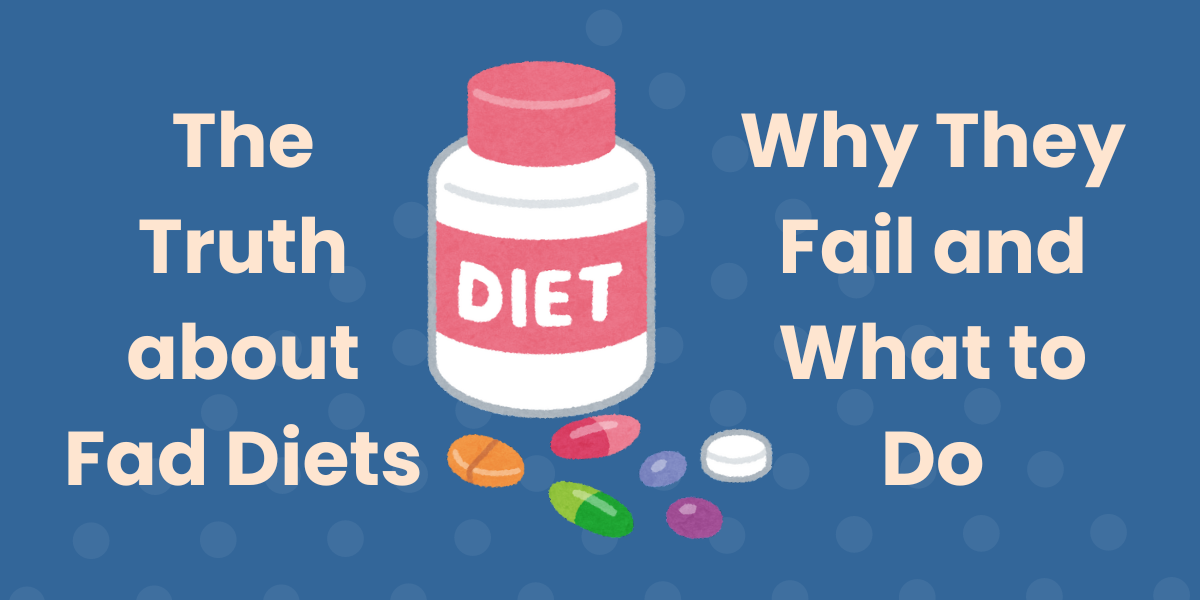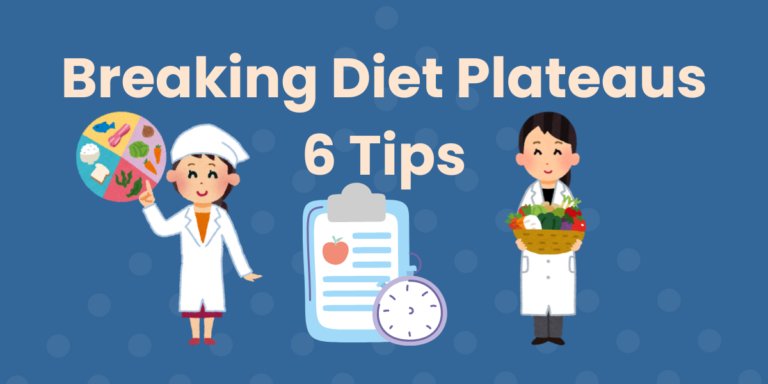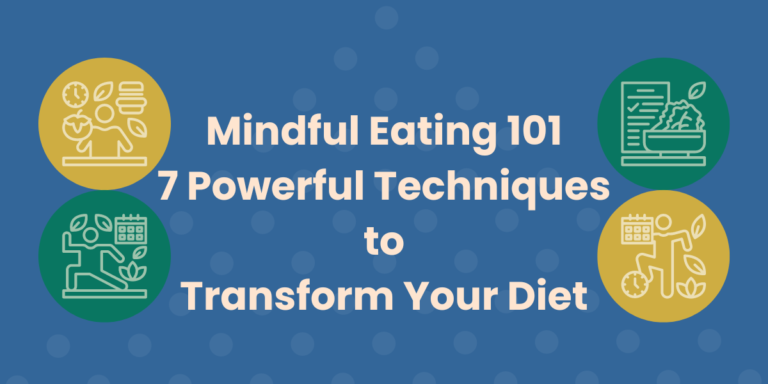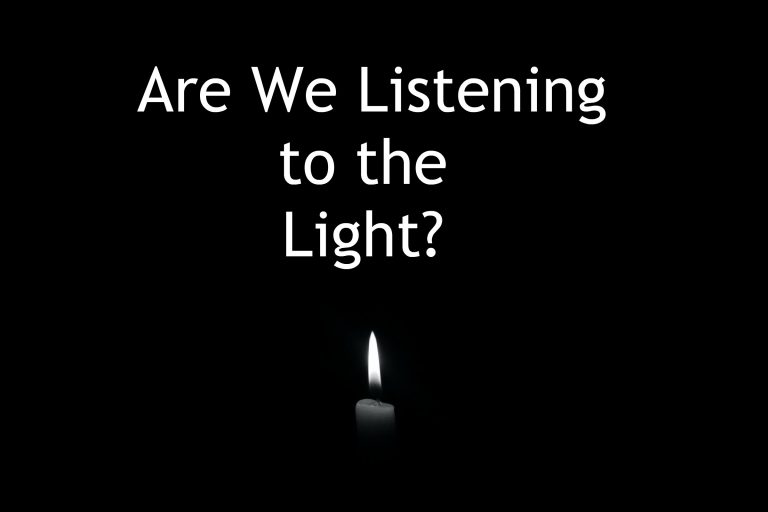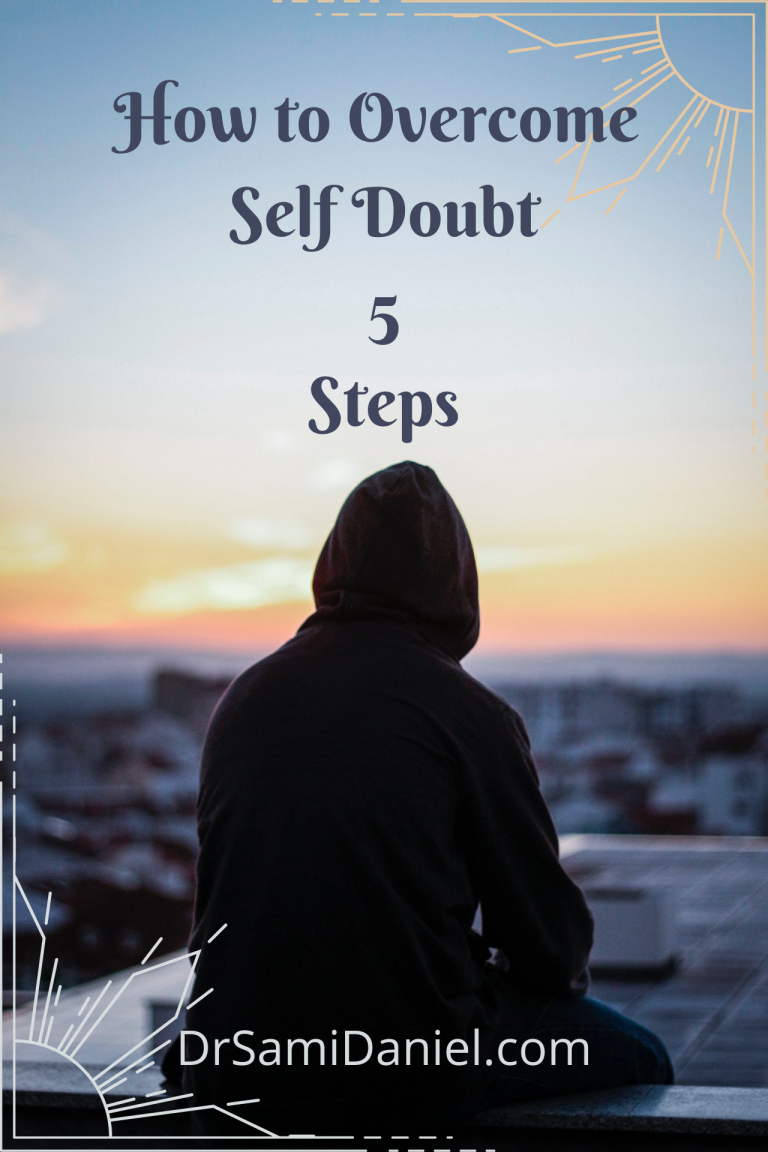The Truth About Fad Diets: Why They Fail and What to Do Instead
Here’s the dirty little secret about fad diets:
They work!
You will get results.
What kind of results? That depends on your purpose.
Sometimes you need a quick fix.
Other times, you need a medically approved diet.
The FODMAP diet helps with SIBO and IBS.1
The ketogenic diet helped children with seizure disorders.2
Lorenzo’s oil demonstrated how a genetic condition demands a certain oil to be healthy.3
Phenylketonuria and gout split hairs about what types of protein you can consume.
Conversely, Dr. Peterson’s family have seen phenomenal success with the carnivore diet. However if you listen to their story, the diet has literally given their family a new life.
These exceptional circumstances work despite the contradictions between diets.
So the question is: What are YOUR needs?
If you’re looking for health-focused eating and sustainable weight loss, then we need a unique approach.
We need a shift in perspective to create healthy eating habits that support long-term weight management.
We’re going to explore the fad diet world, expose pitfalls, and discover healthier alternatives for sustainable weight loss that better suit your goals and values.
If you’re ready, then let’s get started!
What Are Fad Diets and Why Are They So Popular?
Definition of fad diets
In my opinion, fad diets are like conspiracy theories.
Fads are human catnip born out of loosely associated scientific facts to prop up vague assumptions.
So we start with a shred of scientific evidence. Then we take this fact out of context, make an assumption, and try to sell that idea in a package, bottle, or can.
For example, I saw a TV ad for beetroot juice. Where did this ad come from?
Beetroot contains nitrates. Nitrates are converted to nitric oxide which widens blood vessels.
If blood vessels open more, then blood pressure can go down.4
Also, wider blood vessels can allow more blood flow to muscles. This can improve athletic endurance.5
So the ad uses a very attractive woman to tell me about this scientific evidence and subconsciously suggest how my “athletic” endurance might improve other facets of my life.
However, spinach has nitrates too. Studies on spinach can support these claims too.
So why don’t they sell spinach juice for the same reasons? I guess Popeye already has the rights to that product?
This means we need to exercise caution of how scientific studies are used in support of a product; in support of a potential fad diet.
Examples of popular fad diets in 2024
At the beginning of a fad diet’s lifecycle, you get excited!
“Look at these great benefits! I’m going to look and feel amazing!” The gimmicked ads have successfully usurped your thoughts!
There have been a lot of recycled promises!
Atkins, baby food, cabbage soup, carnivore, DASH diet, Dukan, fruitarian, gluten-free, grapefruit, HCG, intermittent fasting, juice cleanse, keto, Master cleanse, Mediterranean diet, military, Paleo, raw food, South Beach, tapeworm, the zone, whole 30, weight watchers.
All new diets start like a firestorm.
They all work.
Some have medical applications.
A few rise above the rest.
What separates the fad from the genuine?
The diets that match our values.
Diets that take a holistic approach and fully nourish our bodies. More importantly, a holistic approach resonates with our desire to be present for loved ones.
These values speak to how we see ourselves.
Psychological appeal of quick-fix solutions
We always want more for less.
We will supersize any meal for 20¢ because we need to justify why we spent $10 on a burger.
Similarly, we want to lose 20 pounds with little to no work.
Unfortunately, this is the wrong mentality.
Yes, there is work to be done. However, work on your values and how the method of losing weight aligns with who you are as an individual.
Here are some questions to shift your mindset:
- What are your three greatest strengths?
- This shifts your mind away from your desire to attain something.
- Instead, you focus on your intrinsic strengths to make a change.
- Think about a big challenge in life. How did you overcome them?
- Again, you are led to acknowledge your inner strengths.
- You also begin to see how these strengths have worked for you.
- What are you most proud of?
- People think this has to be grand. No!
- This can be a small accomplishment.
- The idea is to recognize the connection between inner strength serving your personal values.
You may notice that quick fixes have no place in the constitution of your character.
Celebrity endorsements and social media influence
We all want to look like a celebrity we admire.
The celebrity you admire has a secret: They are also human beings!
So they admire and desire to look like other celebrities too!
They also do things in alignment with their values.
Step back and take time to decide if your values match.
The Science Behind Why Fad Diets Fail
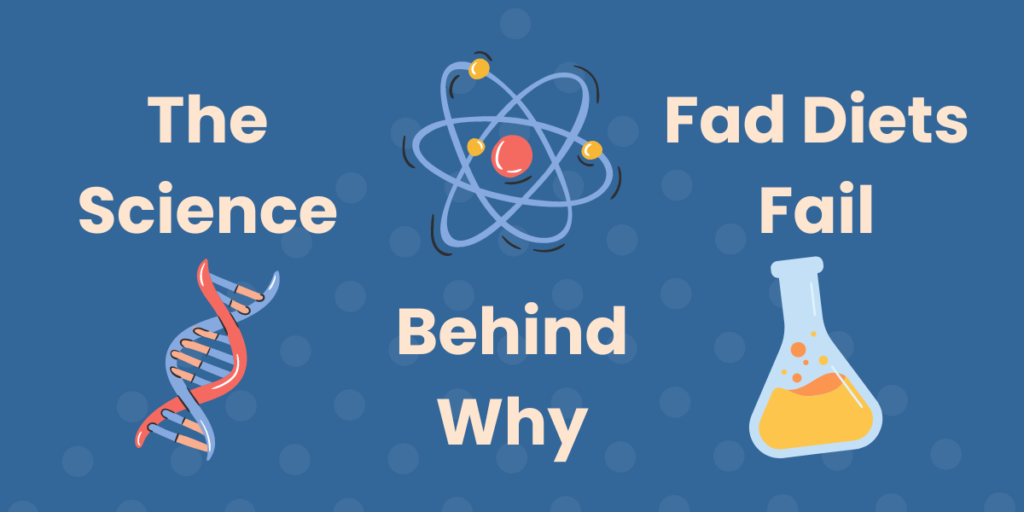
Short-term weight loss vs. long-term sustainability
The body has a one-track mind: To keep you alive!
Fads have a different track in mind: To sell you what you want to hear!
One strategy is short-sighted; the other keeps long-term health as the focus.
Thankfully, our body has our best interest at heart.
Our body knows the quick-and-fast track does not sustain life.
So the body perceives a threat to your survival and begins to conserve resources.
Metabolic adaptations and the “yo-yo” effect
Your body is a miraculous piece of engineering!
If the body feels threatened by the new diet, then it takes a defensive posture.
There’s usually a time delay for the body to shore up its defenses.
During this time, you see “progress” by losing weight and looking better. So you feel great!
Then the metabolic rate slows or grinds to a halt.
Progress is lost.
So everyone naturally works harder. Then the body naturally protects itself harder.
The cycle continues until you finally cannot maintain the unrealistic regimen.
So you let go of the diet, and your body can freely replenish everything it lost plus more!
Finally the body makes changes to return to a semi-normal state, but still prepared just in case it meets adversity once again.
Hence, the “yo-yo” effect.
The yo-yo is not good for your metabolic health. Why?
Nutritional deficiencies and health risks
Your body is designed to maintain a stable balance.
A weight loss program often focuses on tilting the scale of caloric intake.
However this strategy does not recognize the value of nutrition.
Therefore restricting calories inadvertently restricts vital macro- and micronutrients.
What does the body tell itself?
“I had to consume all these extra calories just to get a few nutrients. Now there’s fewer calories, so I better be thrifty before I run into problems!”6
Over time, low nutrients can heighten the risk of disease like cancer, diabetes, and heart disease.7
So how do you tell your body to relax?
Rather than a calorie-focused approach, consider a holistic approach.
A diet that balances calories and nutrients with your strengths and values.
Psychological impact on eating habits and body image
The yo-yo effect wreaks havoc on our metabolism; but the psychological impact is worse!
We try, and try, and try, and try.
We try to achieve our goals. We try to realize our dreams. We try to be more present with our family.
Every failure seems personal. Every setback cuts deep. We feel like lying down and giving up.
“This is just how life is.”
Stop. Take a breath.
Then ask yourself some questions:
- How much effort did I put into this?
- If you were forcing the outcome, then it did not naturally align with your values.
- Did this pursuit truly align with my personal values?
- Did I use my strengths effectively?
- Will power is a strength. But did you use it effortlessly?
- What were the kinks that showed up during the process?
- Sometimes, bits and pieces work while others don’t work.
- Nit-pick the process of the diet.
- Do the values of this diet align with my own?
- How can I reset my approach to minimize effort and maximize alignment with values?
Questions like these demonstrate self-compassion.
They acknowledge that you have done your best and you still possess your strengths.
Be careful not to worry or change yourself. Your best might be good enough. You just might not know it because you used the wrong approach.
So reconsider your relationship to yourself to help improve self-compassion in dieting.
Red Flags: How to Spot a Fad Diet
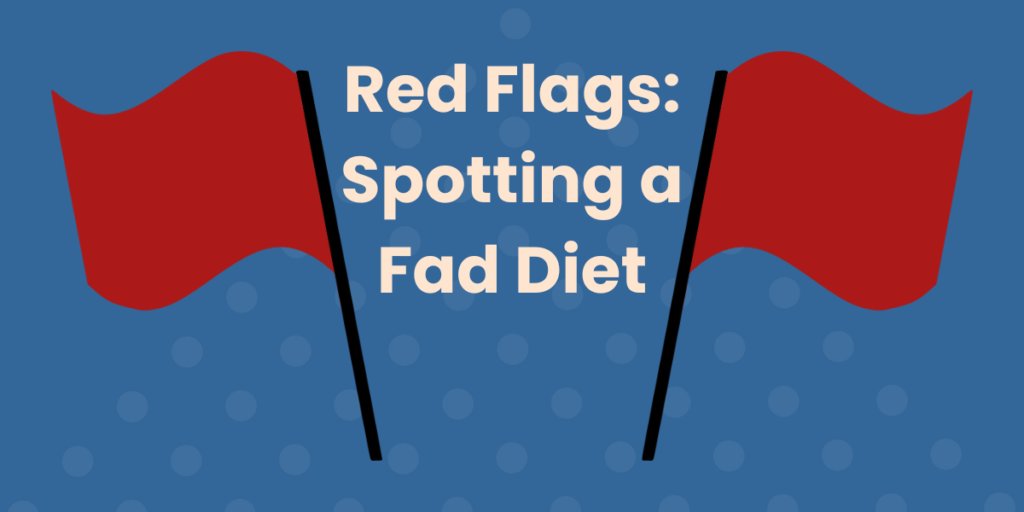
Promises of rapid weight loss
I have a great weight loss diet that I would NEVER recommend to anybody.
Want to know what it’s called?
The cancer diet.
The cancer diet promises:
- Rapid weight loss – Easily lose at least 20 pounds per month!
- You still eat all your favorite foods!
- You don’t have to do a single pushup or sit-up!
Would you be on board with this? I hope not!
Cancer is really good at weight loss. In fact, “unintentional weight loss” is a blaring siren to any physician!
This is not normal.
Rapid weight loss signals potential danger.
The body intuitively knows that rapid weight loss is a threat to life.
Quick results are good in certain contexts.
For example, if I get into a bone mangling accident, then I would like a surgeon today please!
Remember: Promises are tested with values.
Promises of rapid weight loss sound enticing, but do not align with natural core principles.
Elimination of entire food groups
There are medical reasons to cut out food groups.
- The FODMAP diet helps with the effects of SIBO.
- People with celiac disease must follow a gluten free diet.
- The ketogenic diet helps children with epilepsy.
There are reasons to control the intake of macronutrients.
- Carbohydrates for people with diabetes.
- Gluten proteins for people with celiac disease.
- Saturated fats for people with coronary artery disease.
There are reasons to watch the intake of vitamins and minerals:
- People with congestive heart failure need to limit sodium.
- People with chronic kidney disease need to watch potassium levels.
- People with pernicious anemia need injections of vitamin B12.
There are all kinds of medical reasons to watch your diet.
These reasons are always unique to your specific needs.
A fad diet can only make blanket statements. They don’t know you or what you need.
So consider the diet carefully.
Then talk to your doctor and nutritionist to decide if this diet is right for you.
Rigid rules and restrictions
Diets can only change the rules on a handful of variables:
- What to eat and not eat.
- When to eat and not eat.
- How much to eat.
That’s all.
So if every diet tweaks these variables, why do some succeed and others fail?
It depends on how these rules are designed.
Does the diet respect the self-healing nature of your body? Or does the diet impose unnatural rules and restrictions?
Keep in mind, a person with medical conditions needs to play by a different set of rules.
Under these circumstances, the physiology of the body has changed. In other words, the game has changed.
Therefore your doctor is the best source of information to learn the rules of your game and to referee your progress.
However, there is a set of rules that you can apply to any game: Your values.
Your rules should complement the wholesome nourishment of your body.
Lack of scientific evidence or professional endorsement
The funny thing is that fad diets come with “proven research” and professional endorsements!
When you think of CoQ-10, who do you think of? A celebrity.
When you think of diabetes, who do you think of? A different celebrity.
When so-and-so “breaks the silence” and “speaks out” about their struggle with such-and-such, who do you think of?
The television ads and news reports are a wonderful way to grab your attention and raise awareness.
However, now that your attention opened the door to awareness, do your research and educate yourself.
Speak with your doctor and make an educated decision about what is best for you.
Sustainable Alternatives to Fad Diets
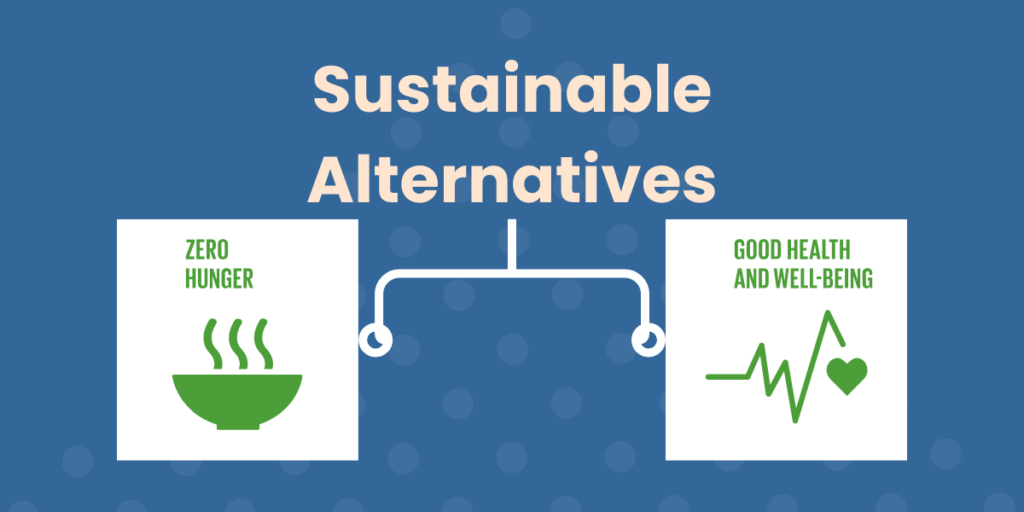
Balanced, whole-food-based eating plans
If you want a sustainable diet, then you need to align your plan with your values.
Ask yourself these important questions:
- If there were just three rules every diet should follow, what would they be?
- How does your current diet fit these rules?
- Is there something you can do to further align your diet with your values?
- Now forget about applying these findings to your diet. How do your values apply to your life in general?
- Is your current diet a reflection of your life as a whole?
A whole foods diet doesn’t just materialize.
A holistic diet grows from the seeds planted by a holistic lifestyle.
A holistic lifestyle grows from the seeds planted by a holistic set of values.
A holistic set of values grows from the nourishment provided by a mindful and intuitive approach.
So the cycle continues.
Mindful eating and intuitive eating approaches
I know most people want me to simply say, “This is the best diet to follow.”
Unfortunately, nobody can tell you the best diet for you except your doctor, nutritionist, and your body.
This means that after you’ve taken in the right advice from trusted sources, you must turn your attention inward.
Tune into your body’s needs.
Be mindful of the decisions you make and how your body responds to those decisions.
So how do you actually do this?
With the dieting equivalent of training wheels:
- The Power of Pause:
- Start with a simple breath before each bite.
- This tiny act can turn fast food into a fine-dining experience, helping you make better food choices and savor flavors you never noticed before.
- Engage Your Senses:
- Food is art for all five senses!
- Take time to appreciate the colors, aromas, textures, sounds, and flavors.
- Try a blindfolded taste test or create a colorful plate to heighten your sensory awareness.
- Ditch the Distractions:
- Turn off those screens and tune into your meal.
- Better yet, spend some time journaling or walking before eating to process your day and create a truly distraction-free environment.
- Slow Down and Savor:
- Ever heard of the 20-minute meal challenge?
- It takes about that long for your body to register fullness.
- Slow down, chew thoroughly, and you might just find yourself satisfied with smaller portions.
- Listen to Your Body:
- Get to know your hunger and fullness cues.
- Use the hunger-fullness scale as a tool, but remember, the goal is greater self-awareness, not hitting a specific number.
- Mindful Food Choices:
- Shift from a diet mentality to a nourishment focus.
- Define your own criteria for “food” and plan meals that balance nutrition and enjoyment.
- Be kind to yourself in this process!
- Gratitude and Reflection:
- Keep a mindful eating journal to track not just what you eat, but how you feel before and after meals.
- Practice food gratitude and watch how it transforms your eating experience.
Remember, this journey is about progress, not perfection.
Start with one technique and watch how it ripples through your relationship with food and life!
Flexible dieting and moderation techniques
With our focus on calories, we lose sight of why food really matters.
Food is nourishment.
Food can nourish our body and our soul.
So when we think about flexible dieting and portion control, let’s not tell ourselves,
“I had a calorie-bomb of burgers and fries with extra sauce last meal. That was so bad. So I’ll have a salad for this meal so I won’t feel so guilty”.
Let’s try this internal conversation instead,
“I had a burger and fries with extra sauce for my last meal that was absolutely delicious! But the nutritional value might not have been on point. Let’s have a salad with lean meats and vital vegetables to make sure I nourish my body well.”
The beauty of this mindset? It’s sustainable.
You’re not white-knuckling your way through a diet and hoping you get what you want at the end of all the struggle.
Instead, you are focused on recreating a lifestyle at the fundamental level.
Personalized nutrition based on individual needs
Anybody can look reasonably good buying a suit or dress off the rack.
However, the tailor can use a measuring tape to elevate your look to majesty!
You even FEEL majestic!
So, what is the measuring tape you should use to create a nutrition plan suited to your specific needs?
In order to understand your body’s specific needs, you need to measure:
- Age
- Gender
- Activity level
- Health conditions
- Genetic makeup
- Lifestyle
- Preferences
As you measure these factors of your life, remember that your needs are never set in stone.
You are a human being with evolving needs because you are on a path of evolution.
Therefore your needs will change with age, not just because your body is getting older, but because your values will drive you to achieve an ever higher purpose.
A higher purpose demands tweaks and changes to your diet.
So don’t be afraid to reassess and adjust your nutrition plan as needed.
The key is finding what works for you in the present.
Building Healthy Habits for Long-Term Success
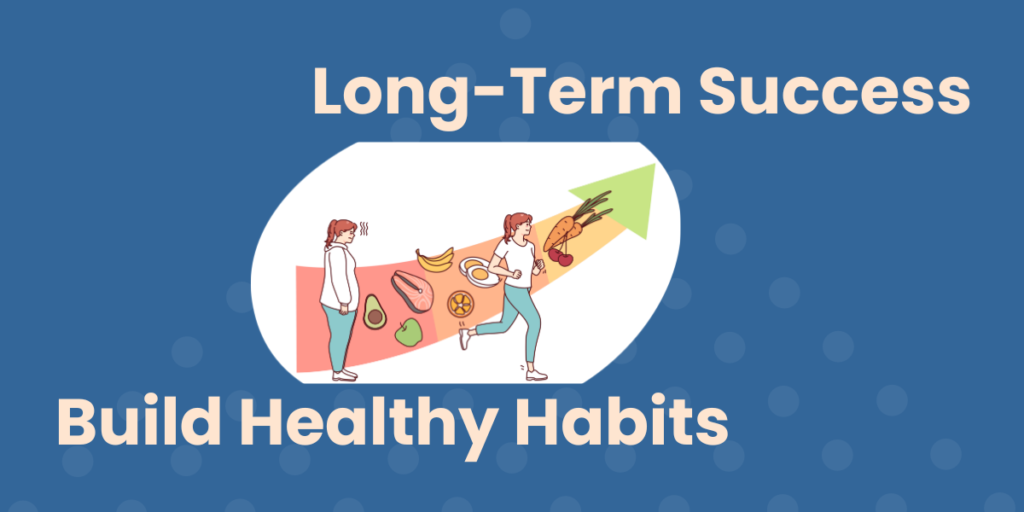
Gradual lifestyle changes vs. drastic measures
There is a lot of conflicting information; a lot of confusing messages.
Tony Robbins promotes “massive action”. James Clear advocates for small habit changes.
Everyone has a system that works for them.
So how do you find the system that works for you?
- Look inward.
- Discover your values.
- Capitalize on your strengths.
While I appreciate Tony’s philosophy, I have more of a James mentality.
“Slow and steady wins the race”.
I would add that slow, consistent, and disciplined steps will invariably carry you to your finish line.
Little habits beget massive changes.
This is where people talk about setting SMART goals.
However, people misstep here. So they try to jump to the goal.
Here’s the trip: You have to set VALUE-based goals.
Your values guide the development of sustainable goals. Why is this important?
These goals will eventually dissolve into nothingness to reveal your character.
The process itself becomes the goal. So reaching the finish line does not matter.
The practice itself becomes the only thing that matters. Living and breathing the lifestyle matters.
The goal simply happens as a side effect of what you do and who you are.
Importance of regular physical activity
We’ve all heard the recommendations.
- Walk at least 30 to 45 minutes per day.
- Walk at least 8,000 to 10,000 steps per day.
The irony is that I can briskly walk about 3,000 to 4,000 steps in 30 to 45 minutes – That’s it!
However those are not the only steps that reduce your risk of premature death.8,9
The turtle understood that every step taken will win HIS race.
What was his race?
Every step allowed him to lengthen his race; lengthen his longevity.
With every step, he wanted to keep improving and be better than his former self.
He understood himself more deeply than the rabbit.
The race is won in the way you carry yourself, not in your ability to get to someone else’s finish line the fastest.
Non-exercise activity thermogenesis (NEAT) exercises understand this component of life.
We’re not on Earth to reach a finish line. We’re not born to lose a certain number of pounds.
We are here to live a beautiful life.
Moving our bodies ensures we can keep moving well throughout our lives.
Stress management and sleep optimization
Everybody knows the importance of stress and sleep on your health.
Everyone understands the irony of feeling too tired to fall asleep – probably not the worst practical joke of the human experience, but it’s up there in my opinion.
So how can you keep stress and sleep under control, balance your circadian rhythm, and avoid a deep dive into a bag of chips at 2 AM?
Here are some practical tips to rebalance your stress and sleep cycle:
- Embrace the power of the “Sacred Bedtime Routine”:
- Treat your pre-sleep time like it’s a religious ritual.
- I would have a cup of tea, do some gentle stretches, and do an arts-and-crafts project or read a book. I usually nod-off on the couch, then drag myself to bed.
- I don’t have kids, but if they are a challenge, then think about how we can incorporate them into the routine.
- Master the art of the “5-5-5 Breath”:
- When stress hits, try this: Breathe in for 5 seconds, hold for 5 seconds, and exhale for 5 seconds. Repeat.
- People tend to pretend they are the big bad wolf and try to blow away their problems! Wrong approach.
- We don’t “win” by strong-arming our problems. We create the space for peace by allowing safe passage through the breath.
- Problems will surface. When they appear in my mind, I write them down so I can let them go. That way, my mind knows that I won’t forget to address them later with a clear head.
- Create a “Worry Time” (yes, really):
- Sometimes you just have to worry about things.
- Again, don’t push them away. Instead, allow them safe passage.
- Set aside 15 minutes a day to worry.
- Write down your concerns, then close the book on them.
- If anxiety decides to visit anyway, then open the book and write some more.
- Try Progressive Muscle Relaxation:
- Dr. Huberman developed Non-sleep Deep Rest (NSDR) based on yoga nidra practices. Try this style of rest when you feel overwhelmed.
- Envision a spotlight, then start at your toes and work your way up, focusing on the sensations and your breath.
- As you go through each level of your body, you become more in tune and realize that you can control the responses.
Remember, managing stress and improving sleep isn’t about perfection; it’s about progress.
So, pick one tip at a time. Try it on to see if it fits.
You might have to adjust the seam or the length.
If it doesn’t work, then try something else on and see if that is better for you.
Social support and accountability strategies
We are naturally social creatures.
I am amazed at the progress people make when they feel supported on their journey!
So tell me about the relationships you maintain.
- Do you feel supported?
- Where are you too hard on yourself?
- Where can you be more forgiving and understanding with yourself?
- Can you see yourself through the eyes of someone who truly loves you? What do you see?
- What’s wrong with you exactly as you are? Why do you feel you need to fix yourself?
Now we can take some time to explore how you can surround yourself with like-minded people.
- Find Your Fitness Pal:
- The app is cool, but I’m talking about a real-life buddy who’s also on this journey.
- Together, you can swap healthy recipes and commiserate about how cauliflower still doesn’t taste like pizza.
- Most importantly, you can lift each other up when you inevitably feel like a failure.
- Join Your Digital Tribe:
- There are online communities for everything including mindful eating and healthy living.
- Find your people and share your victories (yes, choosing an apple over a donut counts as a victory).
- Recruit Your Family:
- Family can be difficult, but magical!
- Turn healthy eating into a family adventure. Have kids? Let them be your “taste testers” for new veggie recipes.
- Spoiler alert: Kids develop a connection through exploration.
- Start a small garden and let your kids see how their food grows, gets cooked, and gets on their plate.
- Get an Accountability Coach:
- This could be a friend, a family member, or even a professional.
- Regular check-ins can keep you on track and motivated.
- Plan Social Activities Around Health:
- Instead of meeting friends for drinks, how about a walk in the park or a cooking class?
- You’ll enjoy the companionship and forget your ulterior motive: being healthy!
Remember, building your support system isn’t about finding perfect health nuts.
It’s about connecting with people who support your goals and enjoy the journey itself.
In other words: being present!
The Role of Professional Guidance in Sustainable Weight Loss
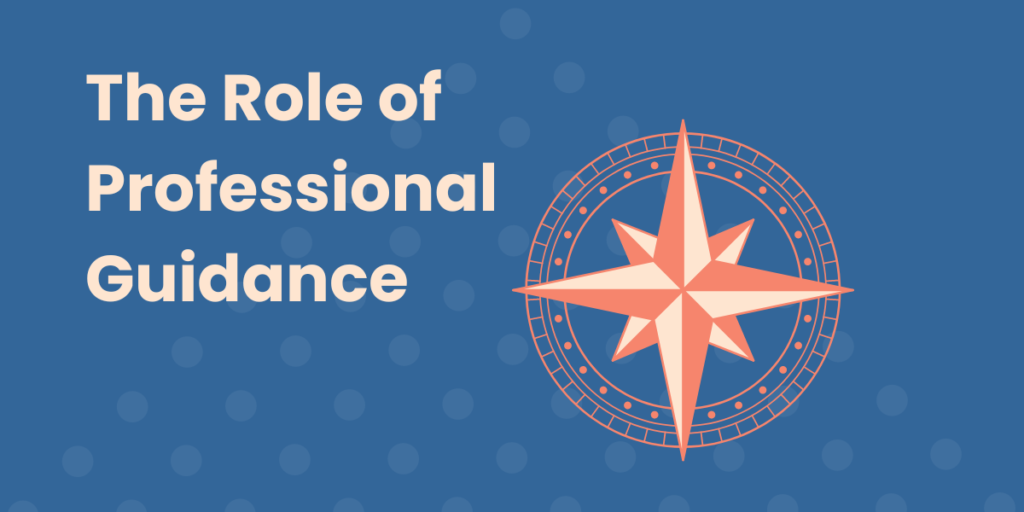
Benefits of consulting registered dietitians
Medical doctors have a lot of time constraints from several sources.
Worse… they don’t get much nutritional education during training.
So your physician’s advice sounds like a fad diet:
- “Eat this. Don’t eat that.”
- “Cut back on this.”
- “No snacking between meals.”
- “Don’t eat three hours before bed.”
- “Always eat something within 30 minutes of taking your meal-time insulin.”
- “Always keep a piece of candy or glucose tablet with you in case your blood sugars are too low.”
Your doctor provides sound advice because your physician incorporates these strategies with your treatment plan.
However since this advice sounds very similar to a fad diet, we can easily confuse genuine advice with an actual fad.
So how can we tell the difference?
A registered dietitian can tailor a diet plan for your needs.
Personalized meal planning and nutritional education
A registered dietitian can speak with you to:
- Understand your personal needs.
- Take your doctor’s recommendations and chronic conditions into account.
- Talk about stress, mental health, and physical activity.
- Provide a personalized plan to meet your unique life circumstances.
- Provide resources to reliable health information like diabetes education classes.
Your doctor and dietitian are part of your healthcare team.
They work with you to restore your vitality.
Medical supervision for certain health conditions
Have you ever wondered why they tell you to speak with your doctor before making a healthy diet change?
Ironically, eating healthy may not be healthy for you.
- Chronic kidney disease
- Minimize fruits and vegetables with high potassium levels.
- Congestive heart failure
- Eliminate the salt shaker from your table; and look for sneaky salt in the nutrition facts of your food items.
- High blood pressure
- The DASH diet works wonders by letting your kidneys release more salt with the help of potassium.
- Ironically, this strategy cannot be used in people with chronic kidney disease.
- The DASH diet works wonders by letting your kidneys release more salt with the help of potassium.
- Diabetes
- Avoid certain fruits and vegetables with a high glycemic index.
- If you’re on glucose-lowering medications, you risk dangerously low blood sugars.
- Follow your doctor closely to make sure your dietary changes do not cause your blood glucose to go dangerously low.
Sudden changes to your diet can create problems for many conditions.
It’s all about finding the right balance. If you change something, the scale needs to readjust.
So speak with your doctor before starting a new diet regimen and/or exercise program.
Addressing underlying emotional and behavioral factors
Our emotions factor into everything we do. However emotions are fleeting.
So how do you identify emotional eating?
Know your values, strengths, and weaknesses.
Benefits of seeing a health and wellness coach
A health and wellness coach guides you towards self-knowledge.
With a deeper self understanding, the coach can help you create your life based on your specific values and find ways to use your strengths to bring your goals into existence.
Here are some questions to think about:
- What do you enjoy doing?
- What are you most proud of in your life?
- What unusual skills do you have?
- Think about a time you were upset. What values were not being met or violated?
- What did you go out of your way to do today? In the last week? In the last year?
- What three rules should everyone follow?
These questions can help us shift our perspective away from emotional eating as a problem.
Instead, we use the opportunity to explore who you are as an individual.
Deepening a relationship with oneself brings about natural behavior change more aligned with you.
Since the changes align with your values, the changes are sustainable.
Conclusion:
That was a lot of material!
Remember this: Life will test your values in different ways.
When you consider a diet (or any activity in life), pause and take a step back:
- What are your values?
- Does this sustain and empower you as a whole individual?
- Do you feel an inner peace even though you know the journey will be difficult?
By embracing sustainable alternatives and focusing on long-term health, you’re setting yourself up for success that lasts way longer than the latest diet trend.
Remember, be the turtle and not the rabbit.
Your journey to a healthier you is the marathon itself, not a sprint to someone else’s finish line.
References:
- Veloso, H. (2023). FODMAP Diet: What You Need to Know. Www.hopkinsmedicine.org. https://www.hopkinsmedicine.org/health/wellness-and-prevention/fodmap-diet-what-you-need-to-know
- Wheless J. W. (2008). History of the ketogenic diet. Epilepsia, 49 Suppl 8, 3–5. https://doi.org/10.1111/j.1528-1167.2008.01821.x
- Lorenzo’s Oil. (n.d.). United Leukodystrophy Foundation. https://ulf.org/resources/lorenzos-oil/
- Benjamim, C. J. R., Porto, A. A., Valenti, V. E., Sobrinho, A. C. D. S., Garner, D. M., Gualano, B., & Bueno Júnior, C. R. (2022). Nitrate Derived From Beetroot Juice Lowers Blood Pressure in Patients With Arterial Hypertension: A Systematic Review and Meta-Analysis. Frontiers in nutrition, 9, 823039. https://doi.org/10.3389/fnut.2022.823039
- Gao, C., Gupta, S., Adli, T., Hou, W., Coolsaet, R., Hayes, A., Kim, K., Pandey, A., Gordon, J., Chahil, G., Belley-Cote, E. P., & Whitlock, R. P. (2021). The effects of dietary nitrate supplementation on endurance exercise performance and cardiorespiratory measures in healthy adults: a systematic review and meta-analysis. Journal of the International Society of Sports Nutrition, 18(1), 55. https://doi.org/10.1186/s12970-021-00450-4
- Ames B. N. (2006). Low micronutrient intake may accelerate the degenerative diseases of aging through allocation of scarce micronutrients by triage. Proceedings of the National Academy of Sciences of the United States of America, 103(47), 17589–17594. https://doi.org/10.1073/pnas.0608757103
- Kiani, A. K., Dhuli, K., Donato, K., Aquilanti, B., Velluti, V., Matera, G., Iaconelli, A., Connelly, S. T., Bellinato, F., Gisondi, P., & Bertelli, M. (2022). Main nutritional deficiencies. Journal of preventive medicine and hygiene, 63(2 Suppl 3), E93–E101. https://doi.org/10.15167/2421-4248/jpmh2022.63.2S3.2752
- CDC. (2024, May 10). Benefits of Physical Activity. Physical Activity Basics. https://www.cdc.gov/physical-activity-basics/benefits/index.html#:~:text=Taking%20more%20steps%20a%20day
- Paluch, A. E., Bajpai, S., Bassett, D. R., Carnethon, M. R., Ekelund, U., Evenson, K. R., Galuska, D. A., Jefferis, B. J., Kraus, W. E., Lee, I-Min., Matthews, C. E., Omura, J. D., Patel, A. V., Pieper, C. F., Rees-Punia, E., Dallmeier, D., Klenk, J., Whincup, P. H., Dooley, E. E., & Pettee Gabriel, K. (2022). Daily steps and all-cause mortality: a meta-analysis of 15 international cohorts. The Lancet Public Health, 7(3), e219–e228. https://doi.org/10.1016/S2468-2667(21)00302-9

